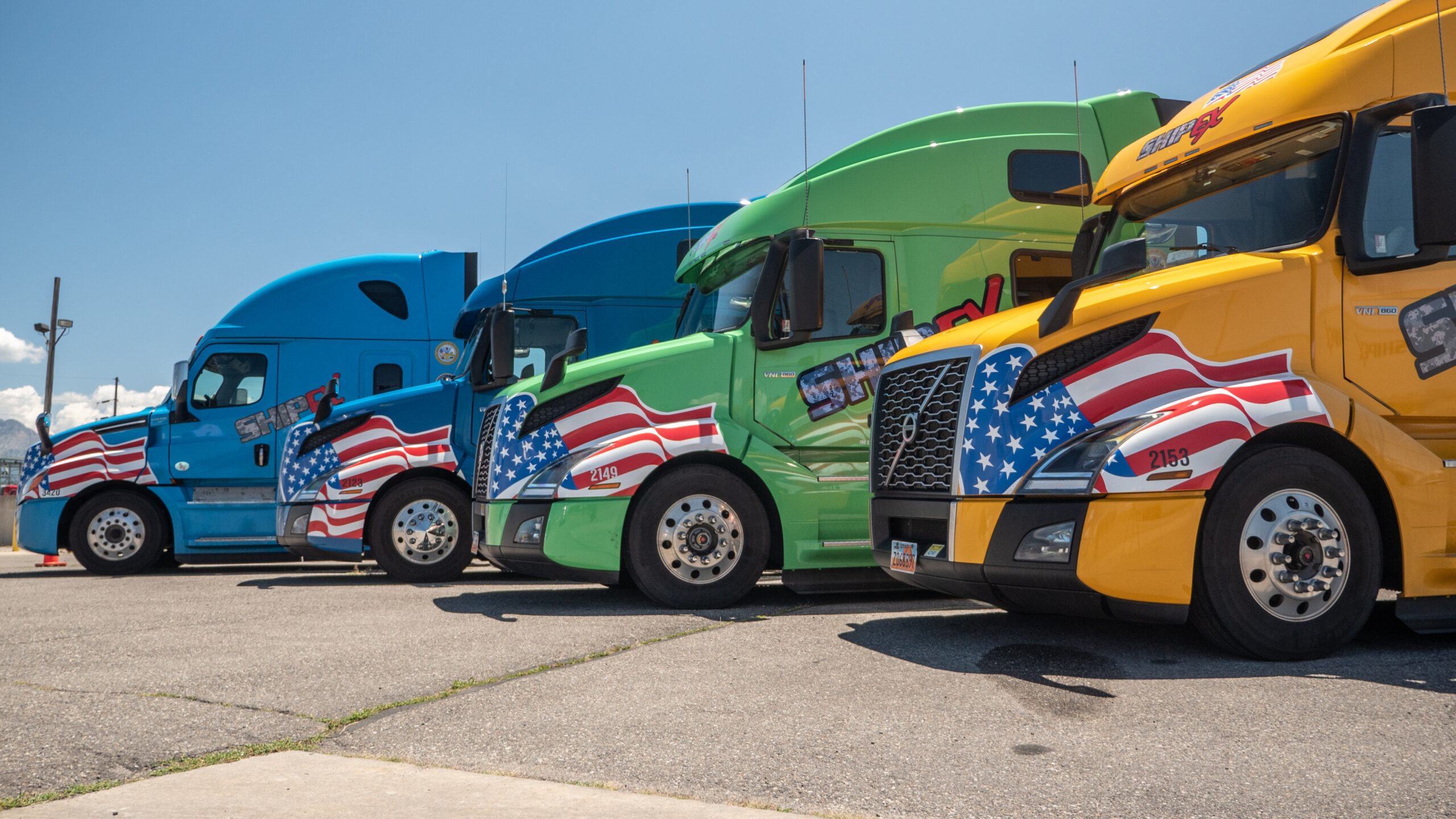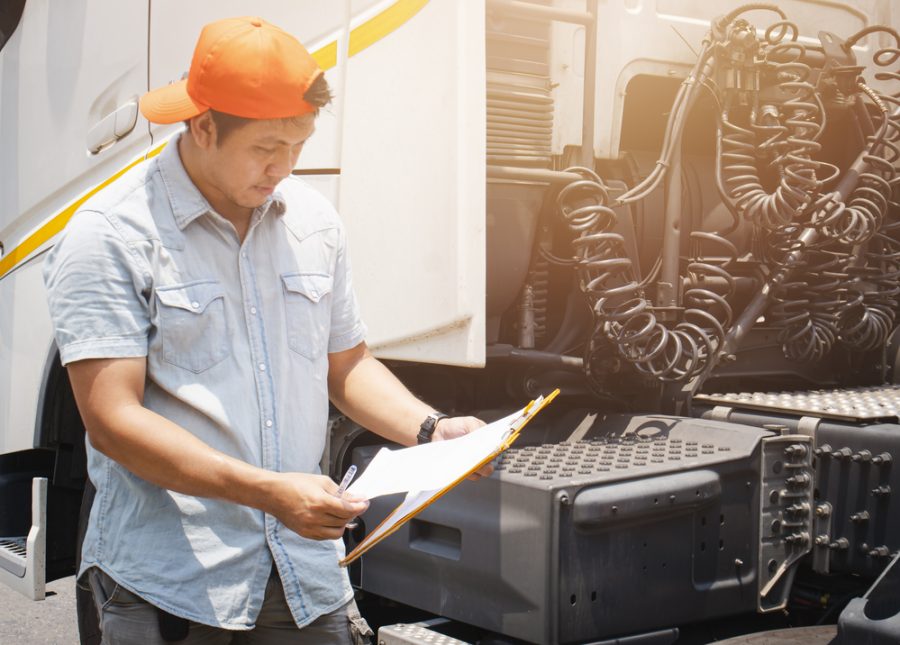Semi-truck inverters are the key to converting DC power from truck batteries into AC power so electronic devices and appliances can work on the road. They power laptops, microwaves, fridges, and even air conditioning units, giving drivers the comforts of home on long hauls. Unlike residential inverters, semi-truck inverters have to withstand constant motion, vibration, and power supply fluctuations, so durability and reliability are number one in design and build.
In the world of commercial trucks, inverters are more than just add-ons; they’re lifelines for drivers to stay connected and productive on the road. With modern technology and more connectivity on the road, inverters are essential tools for truckers to power comms, nav, and entertainment devices. Investing in a good inverter for semi-truck applications is not a luxury but a must-have for drivers who want to enjoy the road and be operationally efficient and safe.
What is a Semi-Truck Inverter?
A semi-truck inverter is the middle man between a truck’s DC power source (usually the batteries) and the AC power needed to run electronic devices and appliances in the vehicle.
It converts DC to AC so truckers can power laptops, fridges, and microwaves on the road. Knowing how these inverters work is key to drivers getting the most out of their truck’s electrical system and being efficient and comfortable on the move.
What’s the Purpose of Inverters in Semi-Trucks?
Inverters power devices in the cab so drivers are comfortable and happy on long hauls. From powering laptops for comms and work to entertainment systems for downtime, inverters give drivers what they need to be productive and happy on the road. That’s good for drivers and operationally efficient – continuous comms and access to tools while away from traditional power sources.
It’s not just about functionality, inverters in semi-trucks create the experience of being at home while traveling long distances. They power devices in the cab so drivers can stay connected, and entertained and even cook meals with microwaves and coffee makers. That’s comfort and convenience. That’s good for morale, job satisfaction, and driver safety – reduces fatigue and quality of life on the road for extended periods.
How Inverters Work with Truck Batteries
In the complex world of semi-trucks, inverters work with truck batteries to convert power smoothly over long distances. Connected directly to the truck batteries, inverters balance power supply and consumption and are the middleman between the vehicle’s electrical system and all the devices it powers.
By controlling the energy flow, inverters let truckers run appliances and devices – laptops to fridges – even while driving. That’s the relationship between inverters and truck batteries. They’re key to the electrical demands of modern trucking and give drivers the capability to hit the road with confidence.
At the heart of that are amps and watts. Inverters take the raw power from truck batteries and convert it into usable energy to power devices in the vehicle. That’s a power conversion dance – balancing the electrical load throughout the journey.
Benefits of Power Inverters in Commercial Trucks
Power inverters are good for commercial trucks because drivers can run household appliances and electronics on the road. That turns the cab into a mobile living space. Drivers can cook meals, power laptops, and run all the other devices they have at home. Bring the comforts of home on the road and drivers can eat healthy, stay in touch with family, and have some downtime. That’s comfort and happiness.
How to Choose the Right Inverter for Your Semi-Truck
When choosing an inverter for your semi-truck, these are the things to consider. Power needs – what devices and appliances will it power? Laptops, fridges, air conditioning units? Knowing the wattage of each device will help you size and capacity of the inverter.
Quality is key – a good inverter won’t malfunction or fail under constant use and travel. Compatibility with your truck’s electrical system is key – so it integrates smoothly performs optimally and doesn’t cause compatibility issues or electrical hazards later.
One of the most important things to consider when choosing an inverter for your semi-truck is the waveform. The pure sine wave is best for sensitive electronics. Modified sine wave inverters produce an inconsistent and disruptive waveform. Pure sine wave inverters produce a clean and stable output just like grid power. That’s key for electronics with delicate circuitry – laptops, smartphones, medical devices. It minimizes damage or malfunction from irregular power supply.
Note: Pure sine wave is best for devices with switching power supplies. The modified sine wave is okay for devices with linear power supplies.
Common Uses of Power Inverters in Semi-Trucks
One is to charge devices like laptops, phones, and tablets so drivers can stay connected, informed, and productive on the road. That’s work-related and to communicate with dispatchers, navigate, and stay in touch with family while traveling.
And power inverters let you run appliances in the cab – microwaves for meals and fridges for perishables. Life on the road just got a whole lot more comfortable.
Tips for Installing and Maintaining Your Truck Inverter
Step-by-Step Installation Guide
Installing a truck inverter gives you access to appliances and devices while you’re away from home. Here’s a step-by-step guide to installing your truck inverter quickly:
- Choose a Spot: Pick a secure and ventilated spot in your cab to mount the inverter. Easy to access but protected from damage.
- Clean the Area: Clear the area of debris and obstructions. Clean the surface to attach.
- Mount Inverter: Use the provided hardware or mounting brackets to attach the inverter. Check alignment and stability.
- Power Source: Find the truck battery or power source and connect the inverter using cables and connectors. Follow the manual.
- Test: Test the inverter. Start with low-power devices, then higher-wattage appliances to test the inverter.
- Tidy Up: Once tested, tidy up loose wires and cables.
Maintenance Tips for Longevity and Performance
Maintenance is key to the longevity and performance of your truck inverter. Here are maintenance tips to run your inverter smoothly:
- Inspect: Regularly inspect the inverter for damage, loose connections, and corrosion. Fix immediately.
- Clean: Clean the inverter and area around it – dust, dirt, and debris. Soft cloth or brush.
- Battery Levels: Watch your truck battery levels. Low battery levels strain the inverter and reduce performance.
- Read the Manual: Read the manufacturer’s maintenance guidelines. Follow the manual.
Note: These tips are for pure sine wave inverters. Modified sine wave inverters have different maintenance requirements.
By following these installation and maintenance tips, you’ll have reliable power on the road and extend the life of your truck inverter. Whether it’s a long haul or just a quick stop, a well-installed and maintained inverter means you have power when you need it.
Conclusion
Inverters are huge in semi-trucks. They power devices, comfort, and productivity. They give you power on the road – communication, navigation, entertainment. That’s efficiency and enjoyment. As you navigate this page to choose an inverter for your semi-truck, remember quality, compatibility, and power needs. Choose the right inverter for your truck and you’ll be ready to hit the road.








